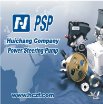-
Welcome to Auto Parts Forum
Whether you are a veteran automotive parts guru or just someone looking for some quick auto parts advice, register today and start a new topic in our forum. Registration is free and you can even sign up with social network platforms such as Facebook, X, and LinkedIn.
Nardi steering wheel
-
Similar Topics
-
By 1772668470
Installing a power steering pump involves several steps. It’s important to have the correct tools and follow safety precautions. Here’s a step-by-step guide to help you through the process:
Tools and Materials Needed:
New power steering pump
Power steering fluid
Wrench set
Screwdrivers
Pulley puller (if necessary)
Jack and jack stands
Drain pan
Safety glasses and gloves
Torque wrench
Steps to Install a Power Steering Pump:
-
By 1772668470
Hello every one, this is power steering pump factory in china.We have 17 years of manufacturing experience with high quality and competitive price, if you have interest ,pls feel free to contact us. call whats app:+86 18006521672 email:[email protected]
-
By Dorman Products
Estimating repairs for “pretty little souped-up four-wheel drive” after vandalization
-
By Counterman
Alltech Automotive has added premium wheel hubs to its QualityPro brand of automotive products, providing full U.S. coverage for second- and third-generation hubs.
QualityPro premium wheel hubs feature a water-based, nontoxic e-coating treatment that enhances corrosion resistance, according to the company.
Lab tests prove that e-coating can prevent corrosion for more than 120 hours in salt-spray test environments, according to Alltech Automotive.
“Our premium wheel-hub expansion addresses ongoing demand in the marketplace for enhanced corrosion protection,” said Nancy Liu, chief executive officer/president at Alltech Automotive. “All mounting hardware and precise torque specs are included in every box for a complete, successful install.”
The post
link hidden, please login to view appeared first on link hidden, please login to view.
link hidden, please login to view -
By Mighty Auto Parts
The post
link hidden, please login to view appeared first on link hidden, please login to view. Four-Wheel and All-Wheel Drive vehicles have flooded the market. Look around your neighborhood, parking lots, daily traffic routes, etc. They come in the form of trucks and SUVs, many of which will never encounter off-road or inclement weather conditions that would require a four-wheel drive application. With these additional driveline components come some challenges for […]
The post
link hidden, please login to view appeared first on link hidden, please login to view.
link hidden, please login to view
-




Recommended Posts
Join the conversation
You can post now and register later. If you have an account, sign in now to post with your account.
Note: Your post will require moderator approval before it will be visible.